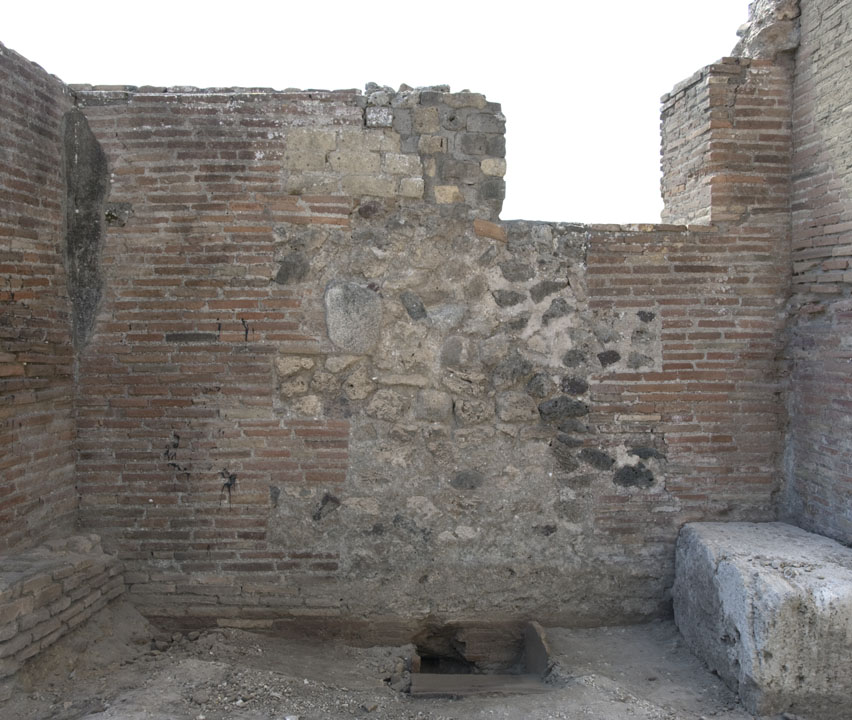West Wall
Description
Henrik Boman
West wall
This wall is constructed in opus mixtum with incertum filling (lime stones, lava and an area below the window with cruma) and tufa block by the south window sill.
The window sill is most likely a modern reconstruction, an observation based on the different stones used (some lime stones) and the hard dark grey mortar.
In the W wall, the zig-zag patterns do not correspond to each other in the corners of the wall, a feature that indicates that the filling between the brick structures originally was intended for opus incertum — the symmetrical cut tufa blocks would have been difficult to fit into the same pattern (as in the façade).
Note that the same area in the façade is completely covered in cut tufa blocks and that the zig-zag pattern inside room 7 does not correspond in rhythm in the façade.
Floor level: The floor level/levels are not established with certainty (in the 2011 investigations), only the top surface of the latrine found by the center W wall gives us a hint of the floor level. There are no indications of floor or relation to floor, though the incertum wall continues to floor level.
Just below the small lava gavel, chip from a yellowish lime stone and tufa is found in abundant amounts. The tufa chips are identical with the cut tufa stones in the façade. The chip found, at a level that is close to the modern surface (indicated by the lava gravel) makes us belief that the room was under construction when Vesuvius erupted. The structure round could very well be finished and the taberna as such taken into use, though the finishing touches of room 7 was presumably not completed.
Plaster: Few traces of plaster preserved, one piece in the SW corner, and a smaller area in the lower southern mid wall and in the NW corner. Bricks in the lower north area are covered with thin layer of plaster remains.
Just below the small lava gavel, chip from a yellowish lime stone and tufa is found in abundant amounts. The tufa chips are identical with the cut tufa stones in the façade. The chip found, at a level that is close to the modern surface (indicated by the lava gravel).
The chip found, at a level that is close to the modern surface (indicated by the lava gravel) makes us belief that the room was under construction when Vesuvius erupted. The structure round could very well be finished and the taberna as such taken into use, though the finishing touches of room 7 was presumably not completed.

